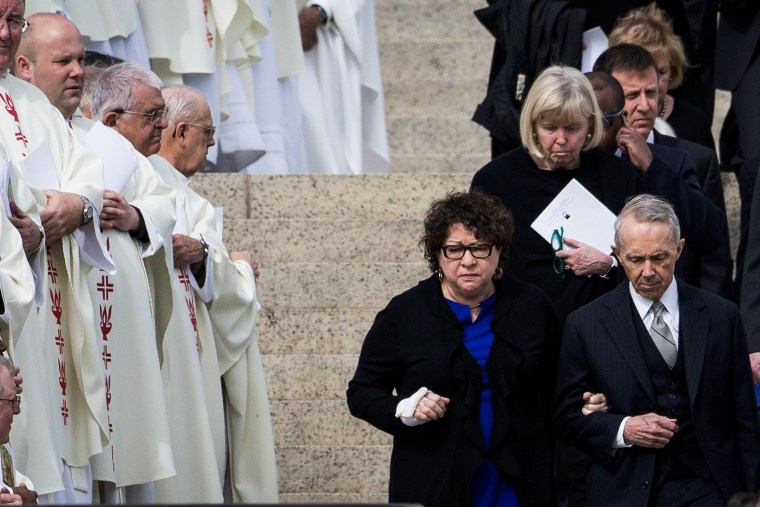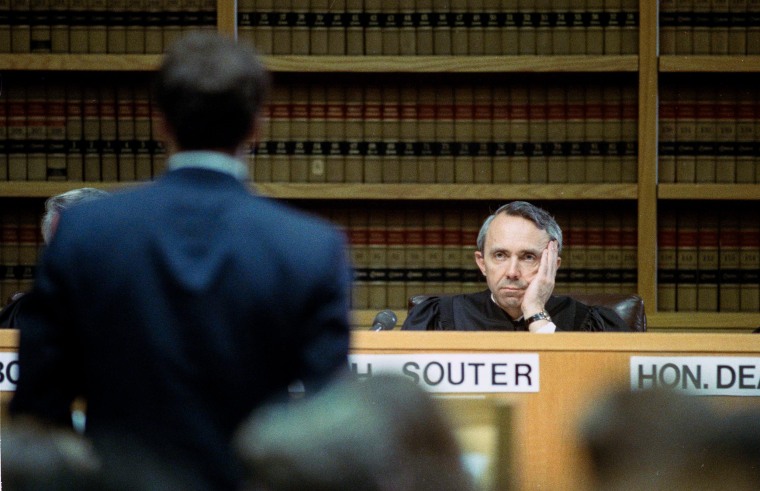WASHINGTON – Supreme Court’s retired judge David Souter, a lifetime that was known for his love for a simple life in New Hampshire and does not like Washington, died at home on Thursday at the age of 85, the court said in a statement.
Rolled by the relative obscurity to serve the Supreme Court, Souter severely disappointed conservatives whose hope that he was a reliable conservative vote was quickly frustrated by aligning himself with more liberal judges on issues such as abortion.
“Judge David Souter served our court with great distinction for almost twenty years. He brought unusual wisdom and kindness to a lifetime of public service,” Judge John Roberts said in a statement. “He will be sorely missed.”
Appointed by President George HW Bush in 1990 to replace liberal judge William Brennan, Souter was seen as a stealthy candidate, someone who the Republicans expected to be easily confirmed, but would prove to be a conservative solid.
Souter, little known outside the New England, was properly confirmed by the Senate at a 90 to 9 vote.
He quickly surprised his supporters and opponents, forging a way as a moderate court that, over time, became a solid liberal vote on issues such as abortion, death penalty and LGBTQ rights.
He was a discreet figure who avoided Washington’s cocktails and lived a frugal life, visiting his home in his family in New Hampshire as soon as possible. He was known for enjoying a simple yogurt lunch and a whole apple, including the core.
In a way, one of his greatest legacies was the impact he had on conservative legal activists, who promised to ensure that a republican president never named another justice that was not adequately examined to ensure that the candidate was a solid conservative. “No more Souters” has become a war cry to the right.
Subsequent republican candidates have changed the court, which now has a conservative majority of 6 to 3, more to the right.
The fact that Souter falls short of conservative expectations became crystalline in 1992, when the Supreme Court considered a major challenge to the rights of abortion, then consecrated in law under the decision of ROE v. Wade of 1973.

Conservatives hoped that with a conservative majority on the court, the case, the Planned Parenthood v. Casey, take ROE v. Wade to be overthrown.
But instead, Souter entered two other republicans – Judge Sandra Day O’Connor and Judge Anthony Kennedy – by creating a decision that supported what she called ROE’s “essential retention” while making significant changes in the legal test to support abortion restrictions.
It would be another 30 years for the court, now with a more reliable conservative majority, to overthrow ROE.
Souter also disagreed with his liberal colleagues in 2000, when the court in the decision of Bush v. Gore interrupted the recount of the vote in Florida, thus ensuring that Republican candidate George W. Bush became president.

In 2009, at the age of 69, Souter gave up his life appointment to return to New Hampshire. That he chose to leave the court under President Barack Obama, allowing a Democratic president to replace him, emphasized how now he was perceived as an essential part of the liberal bloc. Obama then named Judge Sonia Sotomayor, the first Latin to serve in the court.
Born in Massachusetts, Souter obtained a degree and law degree at Harvard and was also a scholar of Rhodes at Oxford University.
He worked as a lawyer in New Hampshire and eventually became the State Attorney in 1976. Two years later, he became a state judge before being raised to the New Hampshire Supreme Court in 1983. Before his appointment to the US Supreme Court, Souter briefly served as a judge of the Federal Court of Appeals.



